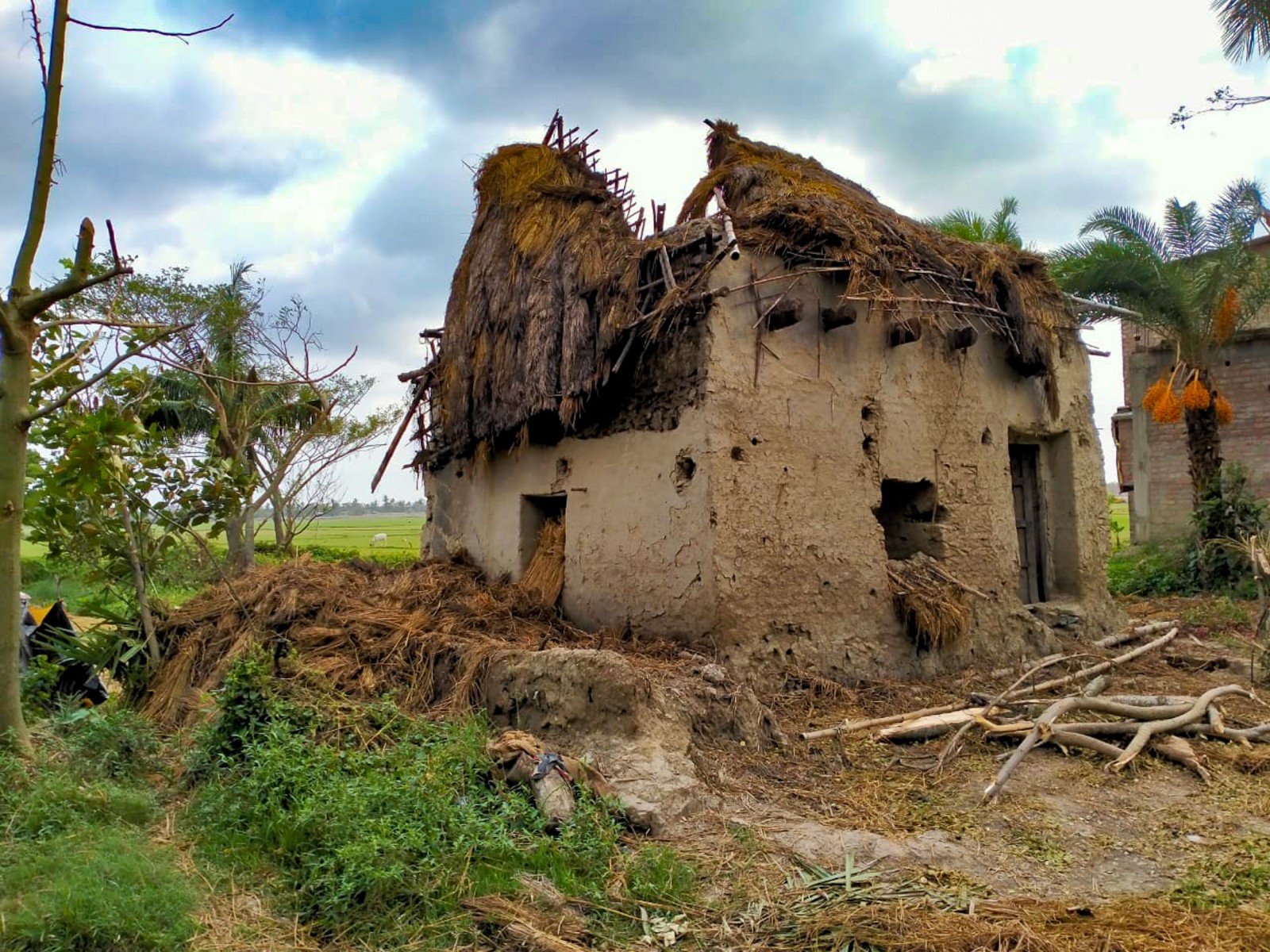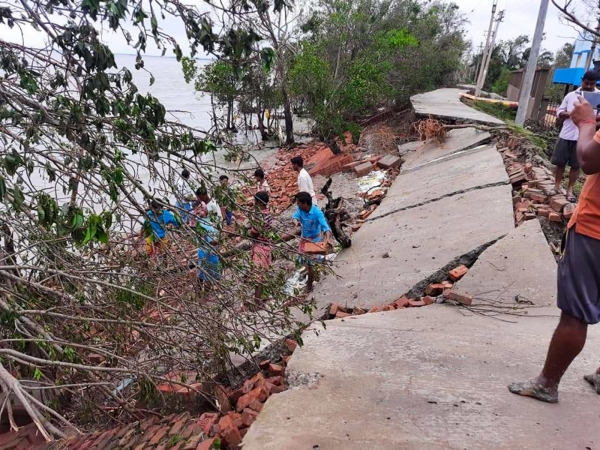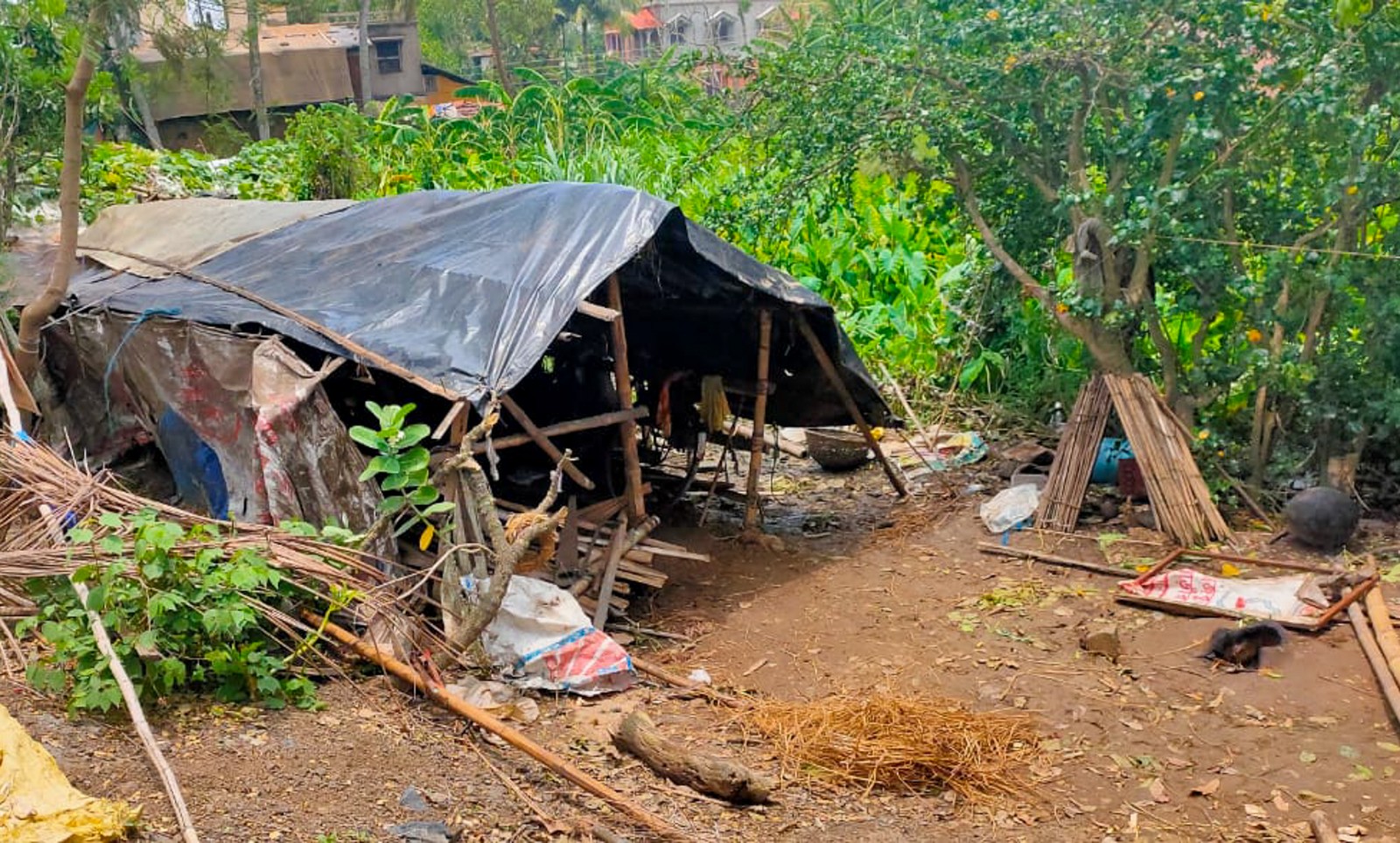
Storms are growing stronger as the planet warms. India must focus on an integrated approach after Cyclone Amphan, researchers say. Photo © Kolkata Society for Cultural Heritage.
August 11, 2020
By Elena Bruess
Circle of Blue
When the lights flickered out and the windows began to shake, Arpita Mukherjee sat in her Kolkata apartment alone and began to consider that she might die.
There was no mobile network, no internet, no electricity. The storm flashed outside. Mukherjee attempted to call her parents again and again, but nothing went through. Are they okay? She had no idea. It was all radio silence. On the fifth floor, she felt her building begin to sway. The windows banged louder. Water from outside seeped through the walls and windows and onto her apartment floor. Blank with terror, there was nothing Mukherjee could do. It was all a waiting game now.
Before Cyclone Amphan hit eastern India and Bangladesh in late May, the storm had gathered momentum over the Bay of Bengal, which was unusually and exceptionally warm. What originally had been predicted as a weaker storm erupted within the span of 18 hours from a Category 1 to a Category 5 monster. The storm surge reached 16 feet and wind speeds climbed to 115 mph as the super cyclone tore through coastal areas.
An estimated half million people were evacuated to shelters in West Bengal and another 200,000 in Odisha. 2.2 million were evacuated in Bangladesh. Though thousands of villages were destroyed, just under 100 people died, mostly from electrocution or collapsed homes. The Sundarbans, a massive mangrove area in the Bay of Bengal, was devastated. The self-sustaining ecosystem, which provides a livelihood for coastal areas and a cushion for high-impact disasters such as Amphan, lost over 28 percent of its forest.
Villagers in the Sundarbans rescue supplies and rebuild their homes after the cyclone. Photo © Kolkata Society for Cultural Heritage
There had been no evacuation in Kolkata. Not in a century had the city felt such a massive disaster. Cyclones don’t usually make it that far inland.
Mukherjee, the 28-year-old director of operations for the Kolkata Society for Cultural Heritage, stepped outside after the storm dissipated. Her city did not look like her city. Uprooted trees lay strewn in the street. Buildings were smashed, and flooding spilled from sidewalks to yards to roads. After one or two days, she heard that 15 people had died in Kolkata, much more in West Bengal. She heard a neighbor had been killed, running outside to grab her dog during the storm. She heard the airport had flooded. Decades of urban development had seemingly come undone overnight.
“It felt like I was in the 1950s,” Mukherjee said.
Two Catastrophes At Once
Amphan was not the only disaster in motion at the time. Storm preparations were hindered by the Covid-19 pandemic.
In an attempt to prevent the spread of the respiratory disease, some shelters were kept half full. Yet, others were packed. In the coastal state of Odisha, some larger shelters had been converted before the storm into Covid-19 centers and hospitals, which limited the usual capacity.
The coronavirus positivity rate in the Kolkata region climbed from 2.5 percent before the storm to 2.8 percent after Amphan. Experts believe this could have been in part due to the lack of social distancing during the storm. India as a whole reached a million Covid-19 cases in mid-July.
Amid the compounding events, the evacuees began to make their way back to their communities to rebuild what they had left behind.
Areas along the coast torn down and destroyed. Photo © Kolkata Society for Cultural Heritage
Coastal communities along the Sundarbans were hit the hardest by the cyclone. Mukherjee and the Kolkata Society for Cultural Heritage, which works on sustainable development projects in urban and rural India, snapped into action.
They began to crowdfund for supplies through Facebook, LinkedIn, and other media. They took boats out to villages, strapped with as many rations as they could hold and handed out supplies: rice, dal, sanitary pads for women, whatever they could muster.
“I don’t think that was enough for them,” Mukherjee said. “The damage was massive. Whatever we could, we have done, but it was not enough.”
The main occupation for those in the Sundarbans is farming. Due to the high storm surge, salt water contaminated large portions of cropland. Farmers could no longer live off fields so damaged, Mukherjee explained. They would lose the income that they had.
Freshwater sources were also spoiled by the salt water deluge. Ponds, wells, and other drinking water supplies were no longer unusable in some coastal villages. In urban areas, the disruption of electrical power stopped the flow of piped water. Vulnerable communities in city slums made do with the water they had on hand when the storm hit. In some areas of Kolkata, this lasted more than four days.
Because of the extent of Amphan’s destruction, the government took about three weeks to deliver clean water to rural communities, according to Mukherjee. Large pumps eventually drained the salt water and pumped in clean water.
A Changing Climate
A crisis in clean water is not new in India, where just under 100 million people live without a source of clean water and over 500 million do not have improved sanitation.
“Water allocation and reallocation and access to water has been a matter of great debate in India,” Abinash Mohanty told Circle of Blue. “Accessibility of water hasn’t been that great.”
A makeshift home. Photo © Kolkata Society for Cultural Heritage
Mohanty focuses on climate change risk assessment and adaptation at The Council on Energy, Environment, and Water in New Delhi. He’s been in the water and climate field for over a decade now.
He explains the cyclone just as he explains India’s water challenges: as a part of a bigger problem. Or really, the biggest problem, which is the changing climate.
India has experienced just under 500 extreme hydrological disasters since 1972. Most of them occurred in the last 15 years. There were 58 cyclones in the 2010s, compared to just 33 in the 1980s. The cost of these disasters is mounting. Between 1998 and 2017, the storms caused $80 billion in damage.
After Amphan struck, the Indian Ministry of Earth Sciences released its first climate change assessment report. The report found that the frequency and intensity of climate extremes in India was going to surpass average global levels. Some parts of the country will have too much water; others, too little.
As global temperatures rise, large water bodies such as with the Bay of Bengal will continue to warm. This increase in warmth is a perfect incubator for strong cyclones like Amphan and the flooding risks they bring. The summer monsoon season, by contrast, is expected to grow weaker, leading to a higher frequency of drought throughout the country.
To Mohanty, Amphan is not an isolated event. India’s climate challenges are related phenomena. Floods, drought, water access: it’s everything together. Policymakers should think in that way, he said. Connect the science of climate change with emergency planning in a way that resonates with locals. Farmers care about salt water ruining their harvest. Coastal communities worry about rising seas.
“You need to have an integrated approach to climate change, climate sciences, and emergency preparedness disaster management,” he said.
Mukherjee and the team at KSCH are connecting locally as well. The organization is working to replant coastal mangroves and rebuild the urban forest in Kolkata. The new mangroves will reinforce the Sundarbans so that the mangrove habitat can cushion the next cyclone. In Kolkata, a greener canopy will buffer air pollution.
Mohanty is worried for the future, but also a bit optimistic. A lot can be done, he said. We have something here. We just have to do it.
Elena Bruess writes on the intersection of environment, health, and human rights for Circle of Blue and covers international conflict and water for Circle of Blue’s HotSpots H2O.






